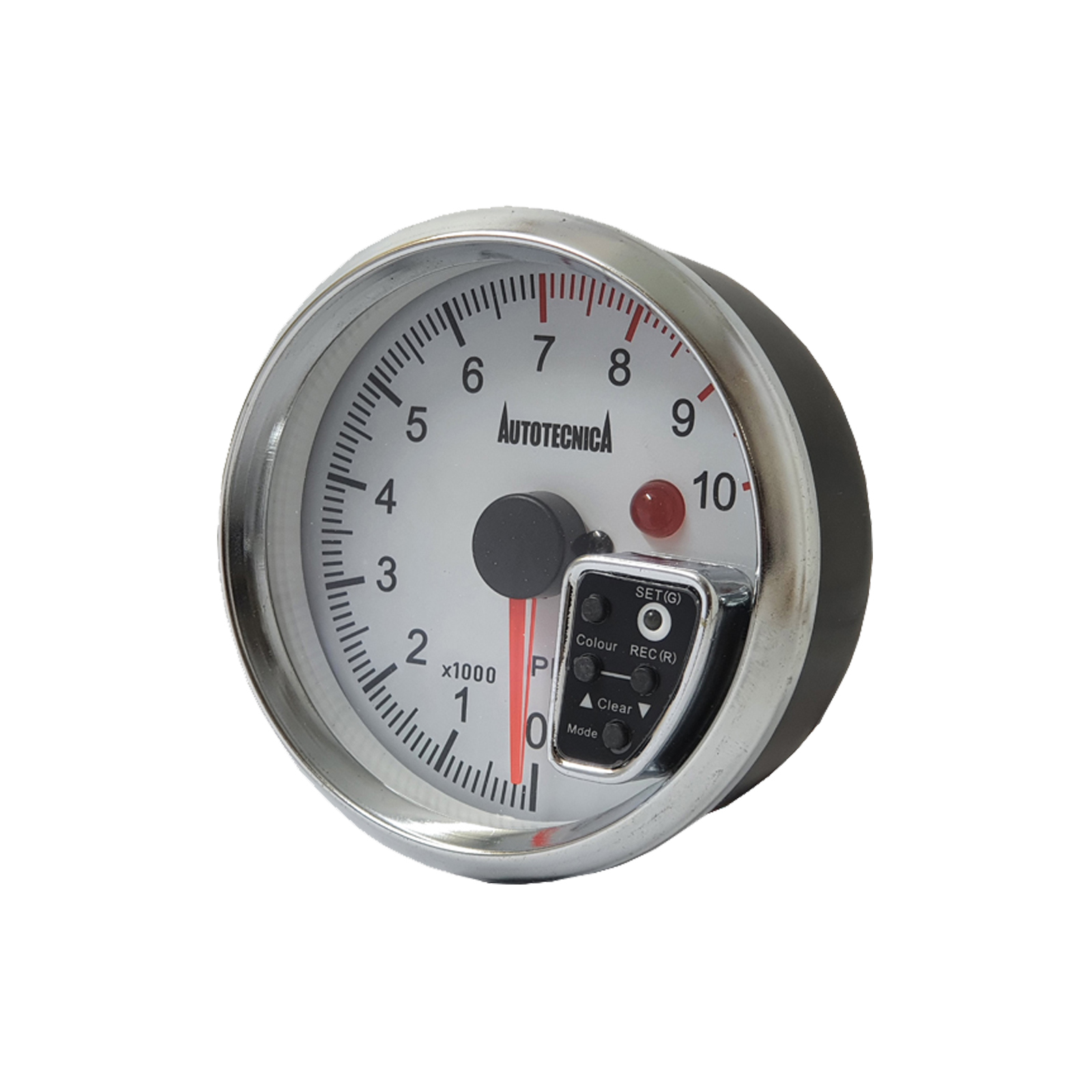Exactly how to Choose the Right Tachometer for Your Auto or Motorbike
Exactly how to Choose the Right Tachometer for Your Auto or Motorbike
Blog Article
The Value of a Tachometer in Checking Engine Rate and Efficiency in Automotive Applications
In the realm of vehicle engineering, the tachometer stands as an essential instrument in the vehicle driver's toolbox, supplying a straight window into the internal functions of an automobile's engine. Beyond its feature as a plain scale of changes per min (RPM), the tachometer offers as a crucial tool for enthusiasts and experts alike, using real-time understandings right into engine performance and wellness. Comprehending the value of this tool goes past surface-level monitorings, delving right into the complex relationship between engine speed, power result, and general driving experience. As we explore the diverse function of the tachometer in automotive applications, a much deeper admiration for its effect on car dynamics and effectiveness begins to emerge.
Importance of Keeping An Eye On Engine RPM
Checking engine RPM, or transformations per min, is an important aspect of vehicle upkeep and performance examination. Engine RPM directly correlates with the rate at which the engine's crankshaft rotates, showing how quickly the engine is running.
In addition, monitoring engine RPM is necessary for performance evaluation in auto racing and high-performance vehicles. Preserving optimal RPM degrees is vital for achieving peak power outcome and acceleration. Racers often make use of tachometers to ensure they are running within the perfect RPM range for optimum efficiency. In recap, keeping an eye on engine RPM is not only essential for discovering issues but additionally for maximizing engine efficiency in numerous automotive applications.

Benefits of Real-Time Data
In vehicle applications, real-time information plays a crucial duty in supplying instantaneous understandings right into the efficiency and problem of the car. By constantly keeping track of numerous criteria such as engine rate, temperature level, gas consumption, and much more, real-time data uses numerous benefits that add to improved performance and security when driving.
Furthermore, real-time information helps with efficiency optimization by offering immediate responses on driving practices and engine effectiveness. Drivers can adjust their actions in real-time based on this details to attain far better gas economic climate and extend the life-span of their car.

Additionally, real-time data plays an important duty in contemporary automotive diagnostics, making it possible for technicians to promptly diagnose and resolve malfunctions. This causes decreased downtime, lower maintenance costs, and eventually, improved overall vehicle dependability and long life (tachometer). By utilizing the power of real-time data, automotive stakeholders can make enlightened choices that favorably affect both the performance and longevity of check my site the car
Influence On Equipment Shifts
The tachometer plays a vital duty in maximizing equipment changes by giving real-time engine rate information to the chauffeur. When coming close to the redline on the tachometer, it indicates the vehicle driver to upshift to avoid over-revving the engine and creating potential damage.
Furthermore, the tachometer aids in achieving smoother equipment changes, especially in manual transmissions. By checking engine rate, motorists can perform gear changes at the optimal RPM range, browse around here reducing snagging motions and decreasing wear on the transmission elements. This accuracy in gear adjustments not just improves driving convenience however likewise adds to fuel effectiveness.
Enhancing Fuel Efficiency
Provided the vital function the tachometer plays in enhancing equipment shifts for performance and engine wellness, it directly adds to maximizing gas effectiveness in automobile applications. By offering real-time responses on engine rate, the tachometer aids chauffeurs in keeping the most reliable RPM variety for gas economic situation. When vehicle drivers constantly check the tachometer and adjust their driving routines accordingly, they can stay clear of unnecessary fuel intake caused by over-revving or lugging the engine.
Moreover, the tachometer assists chauffeurs recognize the most fuel-efficient equipment to be in at any kind of given minute, stopping the engine from functioning tougher than needed. In verdict, the tachometer offers as a useful tool in enhancing gas performance by promoting ideal driving behaviors and determining locations for improvement in the car's efficiency.

Making The Most Of Engine Longevity
The tachometer's role in keeping track of engine speed and efficiency is important in ensuring the long life of auto engines. Keeping an eye on the tachometer enables drivers to Continue remain within the recommended RPM variety for their car, protecting against unneeded strain on the engine and extending its life-span.

Conclusion
In conclusion, the tachometer plays a critical role in checking engine rate and performance in auto applications. By supplying real-time information on RPM, it allows for reliable equipment shifts, improved fuel effectiveness, and optimized engine longevity. This tool is important for maintaining optimal engine performance and making certain the overall capability of a lorry.
Report this page